When I think about a given year in film – at the end of it, at its midway point, or on a Tuesday in October – I tend to return to something the film critic Eric Kohn used to write during his days at IndieWire as an enduring principle: “Anyone who thinks this was a bad year for movies hasn’t seen enough of them.” But 2024… Well, let’s just say it’s had its pitfalls, the biggest of which it can blame on 2023. Last year’s SAG-AFTRA and WGA strikes, having unfolded in tandem, created a natural cavity in this year’s cinematic calendar. Films halted production, were temporarily shelved, pushed back their release dates, or went undated altogether. Some 2023 titles moved to 2024, while some that had initially targeted a 2024 release entered development hell. (Sure, most of those are Marvel movies, but we were never going to see Blade anyway.)
The films that have graced screens so far in 2024 aren’t all of the same caliber as early-2023 films like Knock at the Cabin, Showing Up, How to Blow Up a Pipeline, Beau Is Afraid, Spider-Man: Across the Spider-Verse, Past Lives, Asteroid City, and/or Mission: Impossible – Dead Reckoning Part One, it would be silly to consider 2024 a “down” year thus far. I’m not sure any year is a down year for film, just that some years are better than others. But that’s the case with everything, isn’t it? Films themselves, included. And, as ever, anyone who feels they’ve struggled to find a great one so far in 2024 hasn’t seen enough of them.
To be included, films must have been released in theaters in New York or Los Angeles – or on VOD/streaming – on or before July 12. Festival premieres that have yet to receive a theatrical release are ineligible.
Honorable Mentions (in alphabetical order): The Animal Kingdom (Thomas Cailey); The First Omen (Arkasha Stevenson); Gasoline Rainbow (Turner Ross, Bill Ross IV); Hundreds of Beavers (Mike Cheslik); Kinds of Kindness (Yorgos Lanthimos); Music (Angela Schanelec); Robot Dreams (Pablo Berger); Snack Shack (Adam Rehmeier); This Closeness (Kit Zauhar); We Grown Now (Minhal Baig)
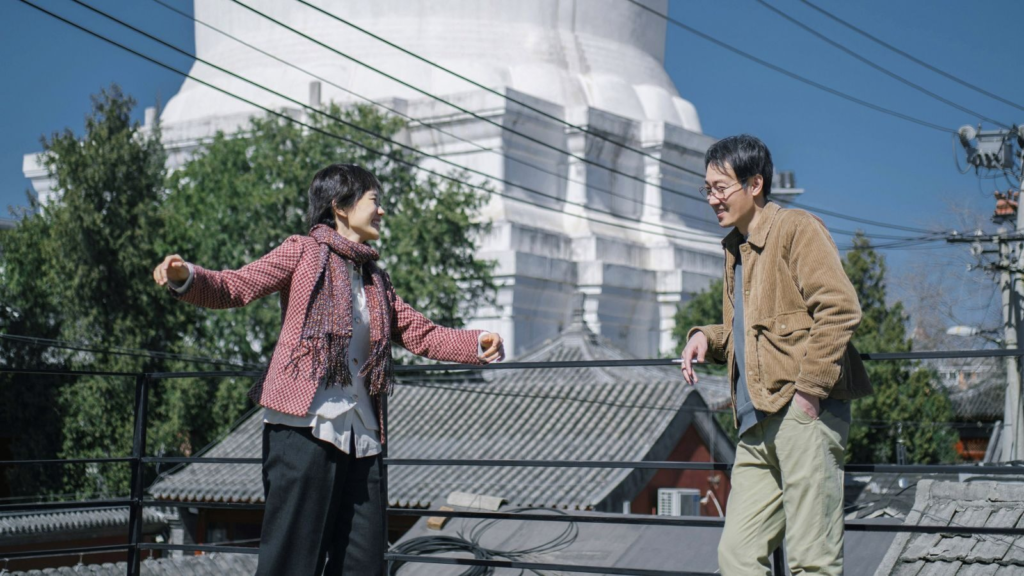
24. The Shadowless Tower
Will Bjarnar: The manner with which Zhang Lu’s poignant 14th feature unfolds has been described in a myriad of ways – as scenes “spilling into each other”; with a delicate touch; as a “melancholic spell.” But perhaps nothing is more accurate than Jessica Kiang’s wording: “in ellipses.” For this simple tale of a food critic (Xin Baiqing) looking to rebuild a relationship with his long-distant father (Tian Zhuangzhuang) while navigating a potentially-romantic one with his younger photographer (Huang Yao) doesn’t formally end as much as it allows for its revelations on healing and love to continue on without completion, as those experiences tend to require time in order to reach resolution. It’s a film about feelings, one that is wholly in touch with what it takes to have them, let alone to wrestle with what they mean.
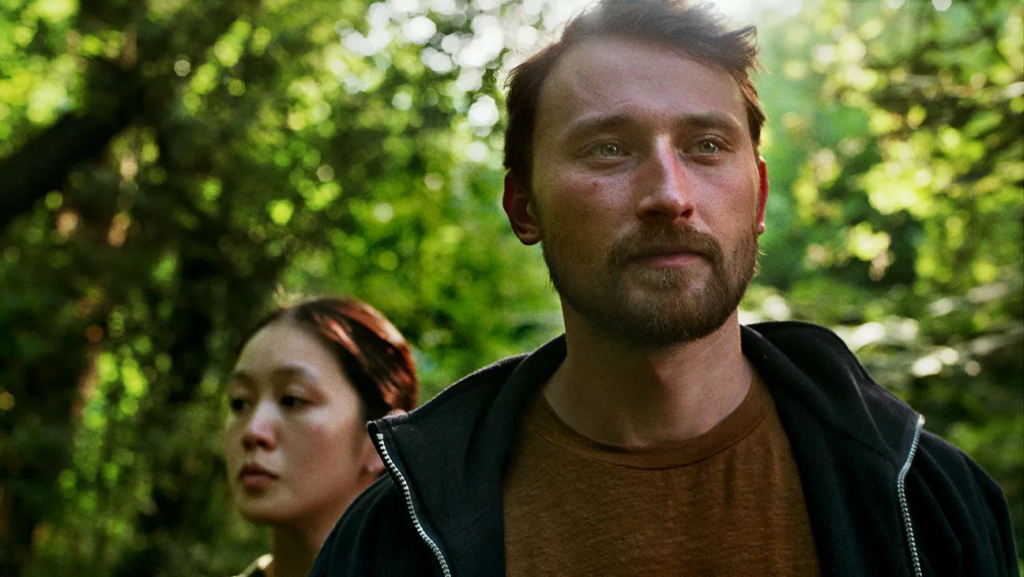
23. Here
WB: The act of living life on life’s terms is front of mind in Bas Devos’ Here, and while its exploration of that idea is not exactly vast, it’s also far from diminutive. Instead, it’s individualized, both for the characters under Devos’ microscope and every unique viewer. Emotions are subtly conveyed in this film about a Romanian man working on construction sites in Brussels coming into contact with a doctoral student of moss just before he leaves the country for summer break. But those emotions are immensely felt; that’s what really matters. A lesser work might trigger an emotional outburst of some kind in an effort to prove to audiences that the characters they have invested time in are capable of feeling as deeply as they are. Here, however, is a film that values its characters’ interests and desires almost as much as they do, and thus commands the audience to do the same. If you’ve never cared about moss before, you’ll almost certainly never look at it the same way.
Read: ‘Here’ Lives Life on Life’s Terms
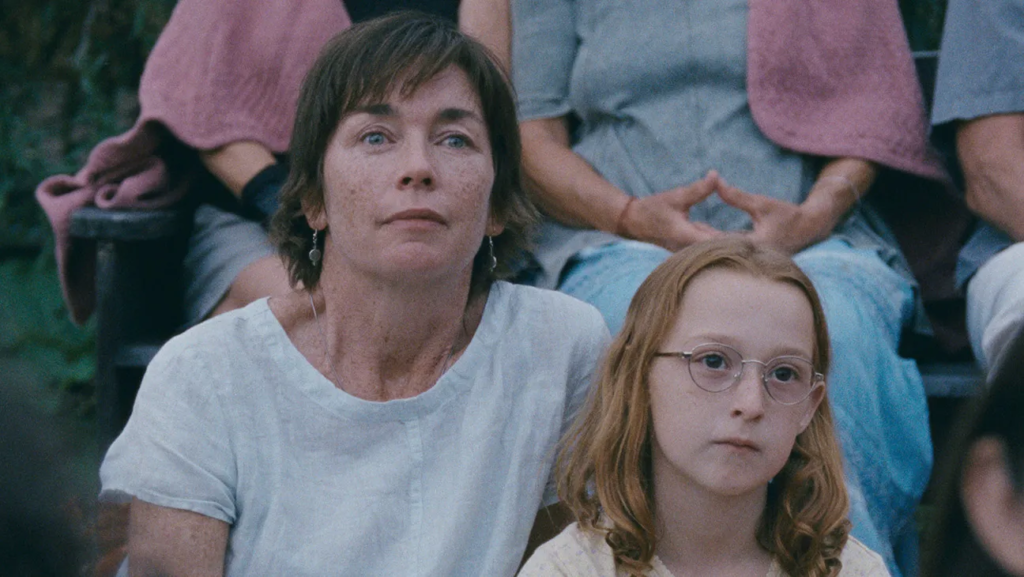
22. Janet Planet
Alex Papaioannou: With her debut feature film, Janet Planet, playwright Annie Baker writes and directs one of the most delightful films you’re likely to see all year. There are many factors that contribute to the warmth that basically pours off the screen, but the most apparent is immediately clear. It’s Zoe Ziegler’s performance as Lacy, the young girl around which this film is structured. … [For] Lacy, being away from her home and her mother appears to have been the breaking point. I too have called home from a sleepaway camp and begged to be picked up, and what should be exciting and refreshing becomes something far worse. It’s a clear-cut indication, at least in my mind as a child, that the universe was telling me I wasn’t supposed to be there. I was supposed to be back home, watching television or making up games to play in the backyard. We are all looking for some semblance of familiarity at that age to calm us, rather than venture out into the unknown journey of growing up and growing apart. And Janet Planet is interested in what it means to slowly lose that sense of familiarity. Whether or not it’s for better or for worse, is left to us to be decided.
Read: ‘Janet Planet’ is a Subtle Look at Memory and Time

21. The Bikeriders
Dave Giannini: Importantly, the [film’s three lead] performances are stunning, and all in different ways. Hardy continues to be at the top of his game, especially in the space between lines of dialogue. His use of silence, facial expressions, and head movement to change the perspective of powerful moments puts him in a league of his own. Comer is the steadying force in this film, a challenge she more than meets, along with keeping a difficult accent with copious amounts of speech. And Austin Butler. I wasn’t convinced of his movie stardom quite yet, but count me in now. It is not just his introduction, which is a masterclass in gazing at a leading man from cinematographer Adam Stone. The forced lack of emotion in Butler is deeply important to the narrative structure and the character arcs of The Bikeriders, and he never wavers.
Read: ‘The Bikeriders’ Accelerates Towards Greatness

20. Kill
WB: If Dev Patel did indeed break several toes and his hand over the course of Monkey Man’s production, one can only imagine how many injuries the punch-happy ensemble of Kill procured throughout filming. The 40-plus fighters on writer-director Nikhil Nagesh Bhat’s train ride from (and, perhaps, to) hell spend the majority of the action-thriller’s runtime taking hit after hit, stab upon stab, and every wound that could possibly be inflicted in between. Best of all: It’s all done in the name of our entertainment. Cinema is alive and well; sometimes, the more alive a movie is, the harder those within the film in question are trying to murder each other.
Read: ‘Kill’ is Cinematically Alive
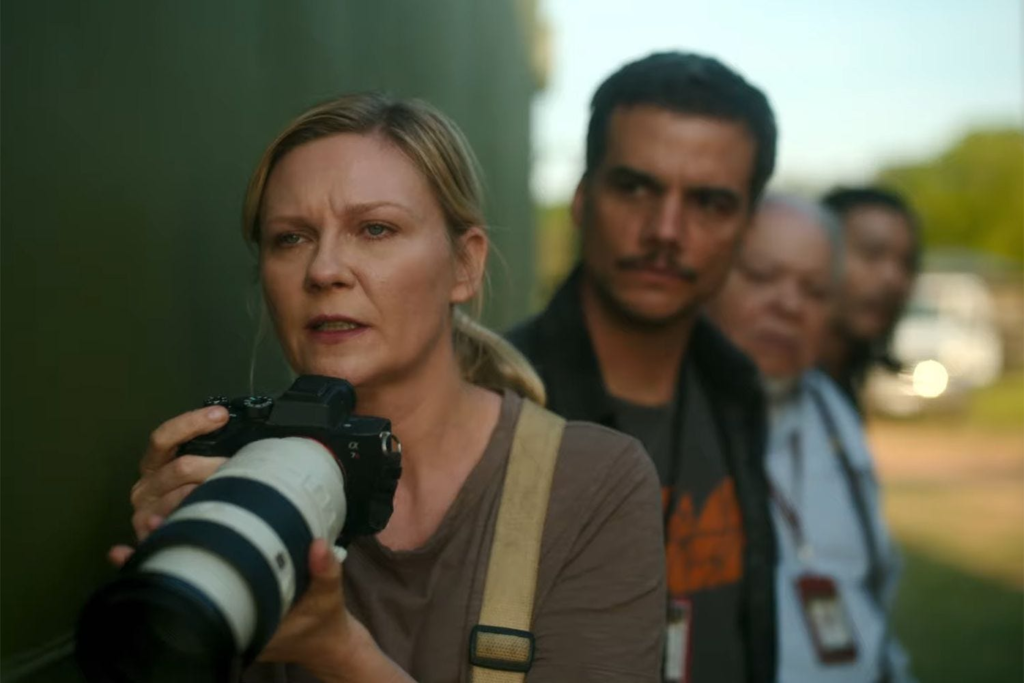
19. Civil War
M.N. Miller: Alex Garland’s Civil War is a truly visceral experience that shows how to play both sides of the fence by allowing the viewer to tap into the film’s meticulous ambiguity, allowing the viewer to interpret which side you gravitate towards. Is the President a version of Donald Trump because he wears a red tie and he’s a White man in power? Are the good guys the ones fighting and brutally and ruthlessly killing soldiers in camo? Then why are the prisoners of war being executed with a ferocious machine gun by people wearing the same clothes? … That’s what makes the film experience of the Civil War so provocative, inflammatory, and dangerous. Anyone left in a dark room watching Garland’s film can be left on their own devices to come to their own conclusions. His tenacious, riveting, and staggering vision isn’t the American dream. It’s an American nightmare.
Review: ‘Civil War’ is an American Nightmare

18. Do Not Expect Too Much from the End of the World
Hector A. Gonzalez: After delivering what I consider his worst work to date with the Golden Bear-winning Bad Luck Banging or Looney Porn, Radu Jude corrects his wrongs with an ambitious, complex, and experimental (even somewhat moving in its latter half) picture in Do Not Expect Too Much From the End of the World, which might be one of his best works to date. It is playful and testing in its satirical nature while implementing some metatextual passages that comment on capitalism, the 2020s influencer era, and Romania’s history (both past and present) without feeling self-righteous or overly pretentious.
Read: ‘Do Not Expect Too Much from the End of the World’ is All Jokes

17. Green Border
WB: When presenting Green Border at 2023’s 61st edition of the New York Film Festival, director Agnieszka Holland made a habit of quasi-warning the audience before each screening. “I’d tell you to enjoy the movie, but that would be inappropriate,” she said, and it’s a fitting assessment. Green Border, a two-and-a-half-hour epic that tackles the European refugee crisis head-on as it actively unfolds internationally, is not a film to be enjoyed, but a film to be studied. Its unforgettable images and its heartbreaking story of four different groups of people, each navigating the uncertain realities of their respective situations, make for a tense must-see that is as pivotal a work you’ll see this year. Enjoyment might be a stretch, but to not admire it is impossible.
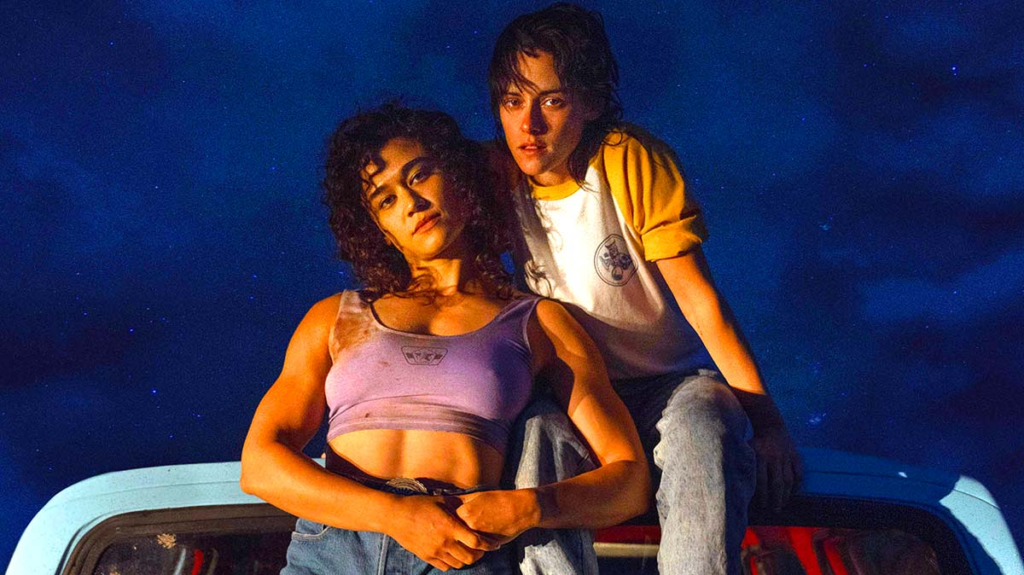
16. Love Lies Bleeding
AP: Rose Glass introduces the principal characters of Love Lies Bleeding to her audience in the most telling way imaginable. When meeting Lou (Kristen Stewart), she is elbow deep into a toilet that’s beyond clogged. Jackie (Katy M. O’Brian) is drowned out by a constant barrage of gunfire as she is brought around the local shooting range. Immediately, she proves her mettle in the sense that she mocks the use of guns, as her preference lies more in the realm of up-close-and-personal. JJ (Dave Franco) is unfathomably repulsive, and would remain as a simply irritating man-child if he wasn’t a serial abuser to his wife, Beth (Jena Malone), who is also Lou’s sister. And finally, we meet Lou Sr. (an unhinged and wild-looking Ed Harris) who is caring for his oversized bug collection. The visual language of Love Lies Bleeding not only looks beautiful, but delivers expressive meaning with each new scene. And if this film is anything, it’s expressive. … But if one were forced to sum up the film in a single word, I believe the best term would be sultry.
Read: ‘Love Lies Bleeding’ Proves How Crazy Love Can Make Us

15. Chicken for Linda!
WB: With sincere apologies to Robot Dreams and not-so-cordial condolences to Inside Out 2 and Despicable Me 4, the best animated film of the year so far is about an eight-year-old girl who really, really wants her mother to make chicken with peppers for dinner. Yes, that’s what Chicken for Linda! is ostensibly about, but in full, it is a far more intricate story about loss and youth, all of which is animated with a gorgeous paintbrush-esque style and vibrant colors, the likes of which we have yet to see this year. Not to mention: It fits perfectly in the Pixar mold of playing well for both kids and adults, the former of which will laugh while the latter weeps. Plenty of fun (and feelings) for the whole family.
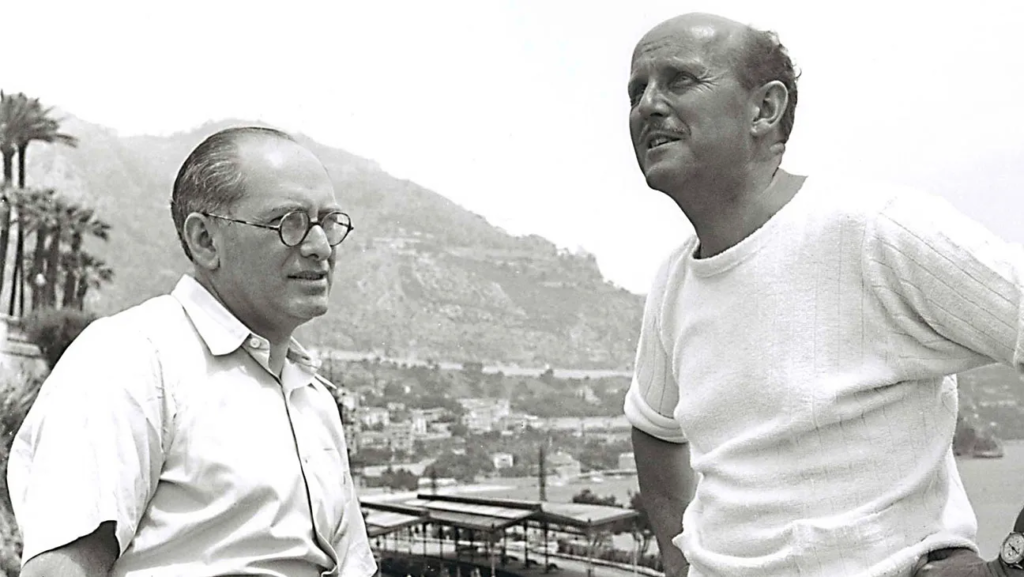
14. Made in England: The Films of Powell and Pressburger
WB: It’s fitting that the two men Scorsese has championed the most over the years, Michael Powell and Emeric Pressburger, are the first to receive such treatment from the man himself in the form of David Hinton’s Made in England: The Films of Powell & Pressburger. Scorsese narrates a sprawling history of the duo’s collaboration as he viewed it: with enthusiasm and adoration. His singular connection to Powell & Pressburger’s work turns what might otherwise serve as a by-the-numbers documentary about a legendary filmography into a far more personal tour through an inimitable yet influential body of work. And sure, it helps that Scorsese just so happens to be one of the seminal filmmakers of his generation, if not le grand fromage; all the more reason to enjoy the journey.
Read: ‘Made in England’ is a Love Letter from Martin Scorsese to Two British Titans of Cinema
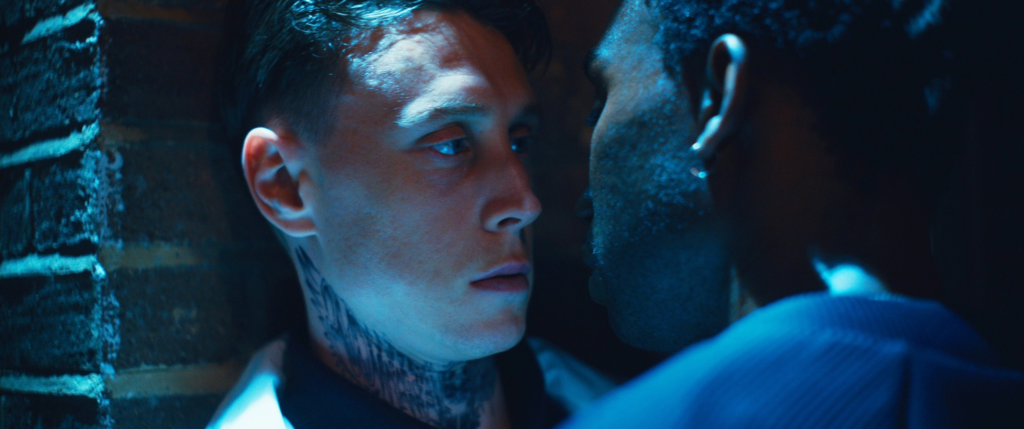
13. Femme
Matt St. Clair: When I saw the short film Femme at the 2021 SXSW Film Festival, I remember being shaken both by its striking filmmaking and its story involving a drag queen experiencing discrimination that plays into the struggles drag queens face in real life, whether it’s in the form of attempted anti-drag club legislation or physical altercations. The newest feature-length film of the same name, by directors Sam H. Freeman and Ng Choon Ping, adapting their own short, is a more heightened experience in terms of tension. … Similarly lush in visual aesthetic as the short of the same name, Femme enriches the source material by offering a deeper exploration of gender identity and putting a queer spin on the heteronormative noir genre as its central lead engages in sensual double-crossing. Sexy, discomforting, and visually sumptuous, Femme makes its case as one of the year’s best movies.
Read: ‘Femme’ is a Visually Sumptuous Yet Tense Anti-Love Story
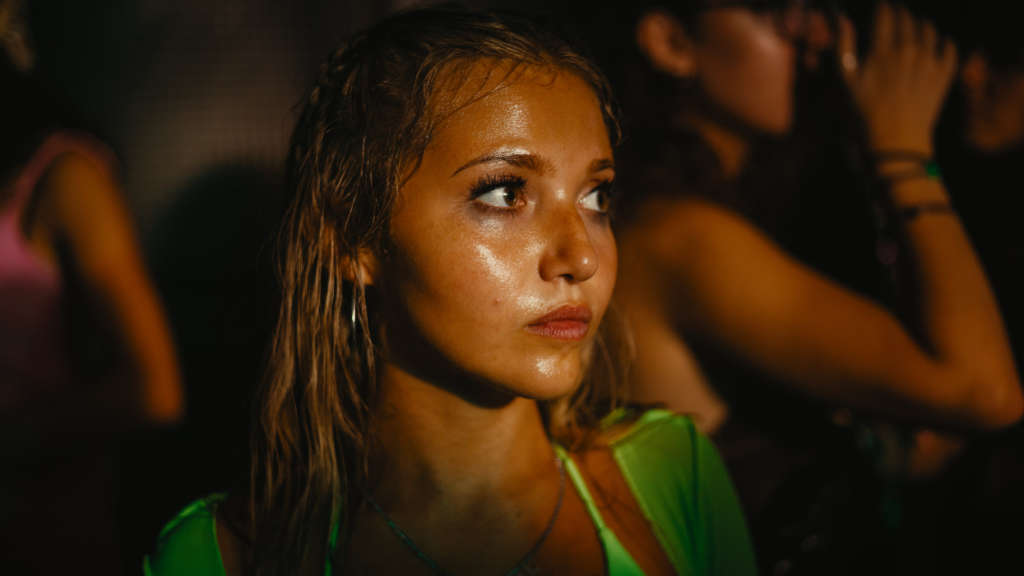
12. How to Have Sex
HG: How to Have Sex is much more than an exceptional directorial debut from London-based cinematographer-turned-filmmaker Molly Manning Walker and a showcase of Mia McKenna-Bruce’s acting talents. This is predominantly an evocative conversation starter. It is occasionally difficult to watch due to the unsentimental glimpse at the female experience, but it is so rewarding once it reaches its closing moments. … How to Have Sex has a strong identity and sense of importance that might cause audiences from various age groups to gather around and start a conversation about similar events, whether you have gone on a similar holiday or not.
Read: ‘How to Have Sex’ Delves Deeper Than Expected
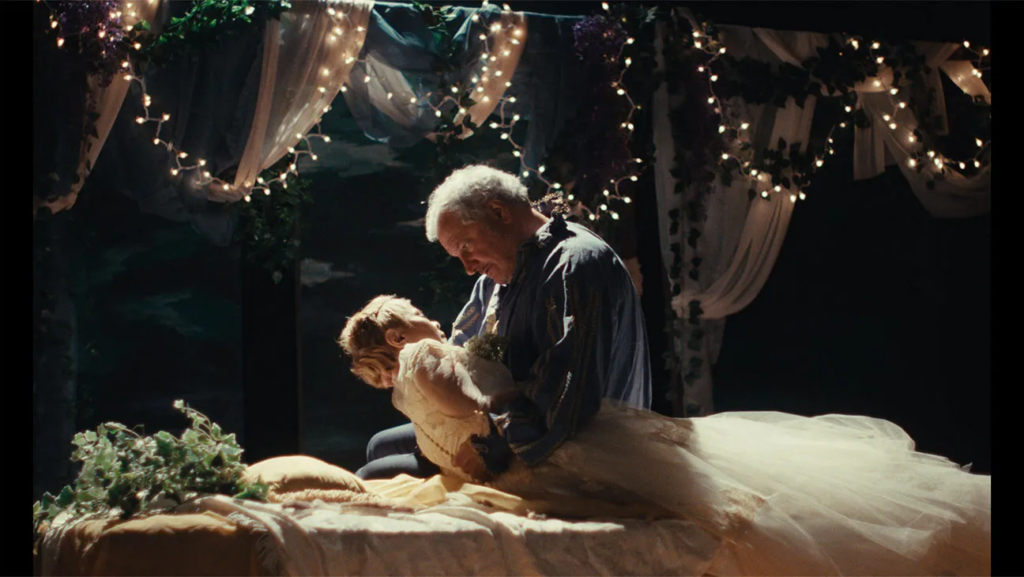
11. Ghostlight
Zach Youngs: Ghostlight is a film about many things, but it’s very much a film about developing empathy through acting. From the perspective of Dan (Keith Kupferer) we’re transported into a community of actors. Actors who see and feel in a completely different way than Dan is used to. Being with those people, giving himself to the process brings out what Dan hasn’t been willing to say, or think, or feel as he deals with his grief. Writer Kelly O’Sullivan has built a deeply layered film. She slowly, beautifully creates the narrative in stages, calling our attention to details, feeding our brains pieces of a puzzle that our heart begins to work out through context. This isn’t a film of grand exposition, preamble, or aside. Ghostlight is a film that gives us everything we need when we need it and not a second sooner. You can see the ghosts, the small ideas written into the script, on the screen in a way that’s magical. It’s a story that will unfold in your head for hours after watching it as your brain stitches together the brilliance of the nuance in every scene and every word spoken. Not enough can be written or said about it. It’s a film that goes beyond what you think a film like it can be. It’s perfectly paced, superbly acted, and it is one of the best written films of the decade. There is nothing else like it on screens now and it must be seen.
Read: ‘Ghostlight’ is an Astonishing Creation

10. Last Summer
AP: Last Summer [marks] Catherine Breillat’s return to filmmaking after a decade. The auteur filmmaker has been away from cinema for a while, but one thing is apparent: the provocative nature of her films has not lessened during this hiatus. With her latest, Breillat confronts her audience with a taboo subject, but is also able to interject a palpable sense of youthfulness and beauty into a story that will have many doing all they can to block the on-screen images from their minds. The film is centered around Anne (Léa Drucker) and Pierre (Olivier Raboudin), and the seemingly calm and affluent life they live with their young daughters. Her stepson, Théo (Samuel Kircher), moves into their home after getting in trouble at school, and the lens of the film immediately shifts. Breillat composes nearly every frame with Anne firmly rooted in the center of it all. In the hands of Drucker, this performance soars into a realm of intrigue. … [And] with Last Summer, Breillat, after four decades of filmmaking, proves that a compelling secret being withheld is always a lively cinematic experience; even if the lie in this case is meant to repulse and shock us on some level.
Read: ‘Last Summer’ is a Precarious Balancing Act
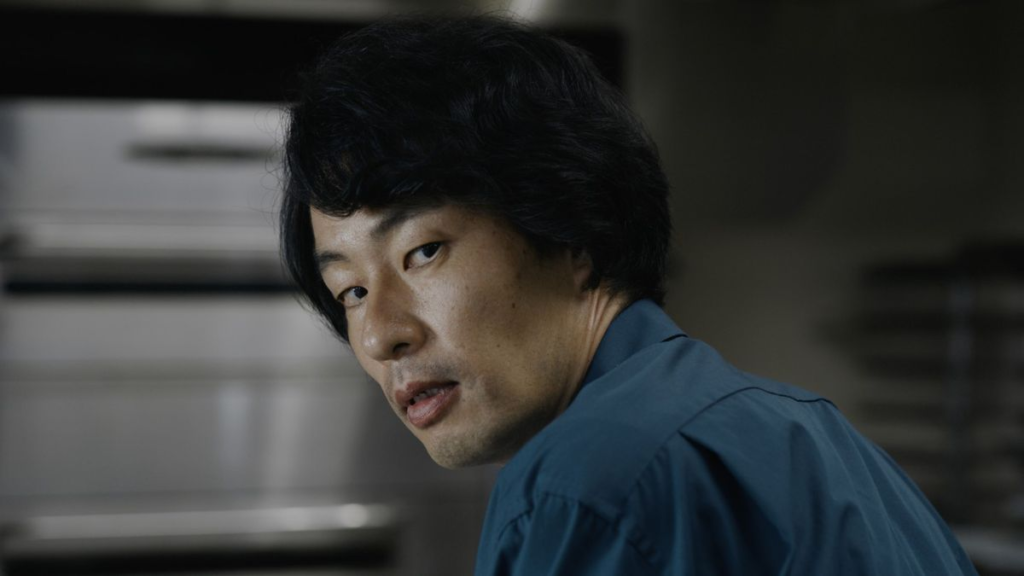
9. Chime
WB: If you had a Japanese NFT as being one of 2024’s best films on your bingo card, I suggest you check your lottery numbers; you might just be a whole lot richer than you were yesterday. As is anyone who indulges in the sadistic pleasure of Kiyoshi Kurosawa’s cinema, Japan’s foremost filmmaker in the horror genre. And while his 45-minute film Chime – which you can rent (or non-funge?) exclusively on Roadstead – may not be as rewarding nor as purely terrifying as Cure and Pulse, Kurosawa’s masterworks, it is just as unsettling, if not more so. As the titular noise begins to urge the film’s characters to commit unseemly acts in rapid succession, we as viewers begin to wonder if we’re going insane ourselves; if we can’t hear this chime, what does that make us? Innocent bystanders, or complicit onlookers? Sometimes, nothing is as terrifying as a film that refuses to answer a crucial question, precisely what Kurosawa tends to go for when he grants us the chance to delve into his increasingly-dark worlds.
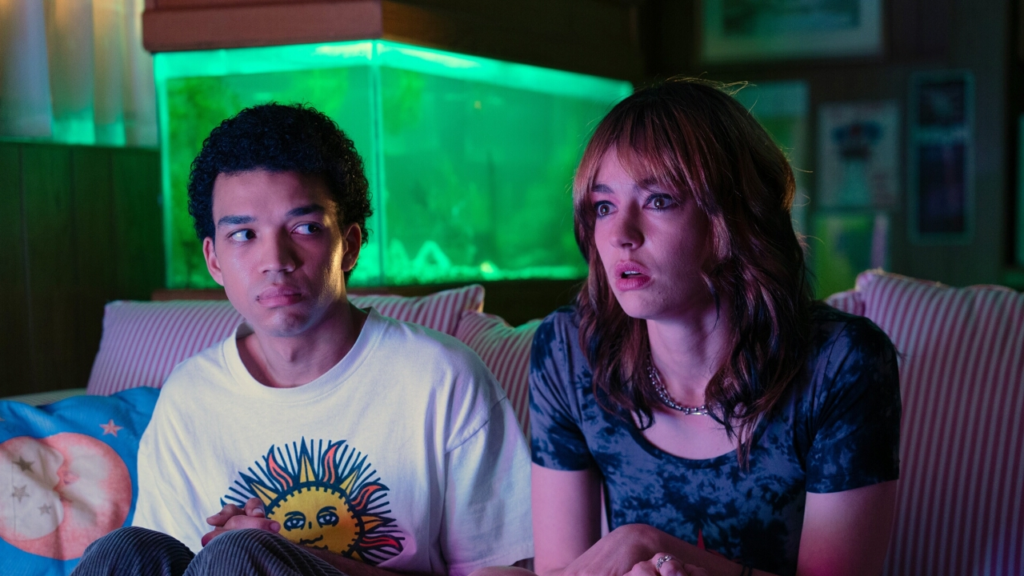
8. I Saw the TV Glow
AP: After the major buzz of their last film, We’re All Going to the World’s Fair, filmmaker Jane Schoenbrun became quite the genre filmmaker star. Any possible doubt regarding their talent will be instantly quelled with I Saw The TV Glow. Prior to the world premiere of the film, the director stated their vision for the film prior to the first day of shooting. With I Saw The TV Glow, they “tried to make a movie that would play at midnight screenings at the IFC Center for 20–30 years to come.” It only takes a few minutes to realize that their vision is basically set in stone, but furthermore, it shows that Schoenbrun has absolutely no thoughts of slowing down their complete commitment of bringing bold filmic visions to audiences.
Read: ‘I Saw the TV Glow’ Examines Our Relationship With Art
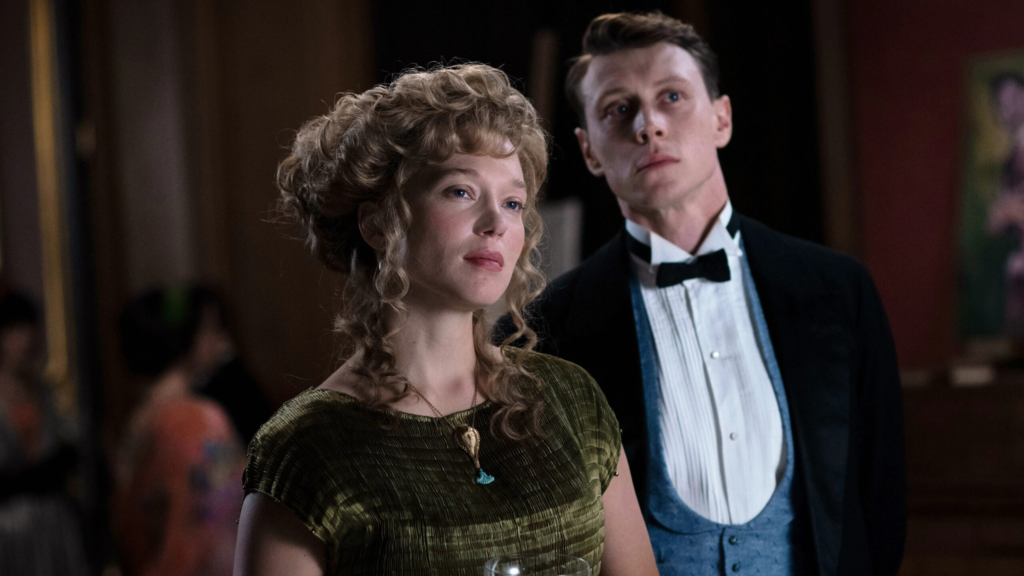
7. The Beast
WB: Startlingly prescient and wholly original, The Beast — which Bertrand Bonello loosely adapted from Henry James’ 1903 novella, “The Beast in the Jungle” — could feasibly be reduced to a drama about star-crossed lovers, but its complications make it a significantly more curious piece to gnaw on. Indeed, Gabrielle (Léa Seydoux, having quite the year) and Louis (George MacKay; him, too) appear to have known each other for some time, but the early revelation that they seem to have been in one another’s orbit for centuries, across timelines and in different forms of themselves, elucidates the notion that not only are these beautiful, curious figures entangled in more ways than one, but that their lives will never not be entwined. Whether that’s for worse or for better isn’t much of a question by the time Bonello’s latest mindfuck concludes on a perfect, volatile note, but the other questions it posits linger with a level of intensity most auteurs would kill to achieve. It’s not just about fear and love, but the fear of love; it’s a depiction of the terrors of possibility, and the inevitably of terror, a masterful one at that.
Read: ‘The Beast’ is a Transcendent Sci-Fi Epic

6. Furiosa: A Mad Max Saga
WB: How do you follow-up your own masterpiece, not to mention the best action movie ever made? If you’re George Miller, you go back to the same well that made Mad Max: Fury Road so epic to tell the curiously-heartfelt yet still wholly maniacal origin story of Furiosa (Anya Taylor-Joy). As it unfolds in five parts, spanning from a young Furiosa’s (Alyla Browne) kidnapping by the big-nosed, brash Dementus (Chris Hemsworth) to her rendezvous with the noble Praetorian Jack (Thom Burke) to her eventual independence in the film’s closing moments, Furiosa never fails to make good on its challenging task. It may not live up to Fury Road in terms of narrative depth nor action-packed prowess, but it’s a worthy companion piece that sees a 79-year-old madman remaining consistent with his uproarious worldbuilding and elevating further beyond what we believed to be the peak of his powers with his War Rig-centric scene of the year. Furiosa is still playing in a number of theaters, if you have any interest in helping a near-masterpiece’s box office prospects.
Read: ‘Furiosa: A Mad Max Saga’ is Both Transcendent and Indulgent

5. Hit Man
Maxane Vincent: Hit Man shows exactly how modern-day romantic comedies should be: incredibly funny (with a keen eye on society’s warped priorities, through sharp jokes on cancel culture and America’s f–ed up obsession with the Second Amendment) and impeccably sexy, with two impossibly beautiful leads giving the romantic tension needed for us to keep wanting to spend time with them. Yes, it helps that Powell and Arjona know how to act and modulate emotions, which makes their characters feel far more alive in the hands of Linklater than in some of his previous (failed) efforts. As a result, Hit Man is Linklater’s best movie since School of Rock, his greatest achievement.
Read: ‘Hit Man’ is Sharp and Sexy
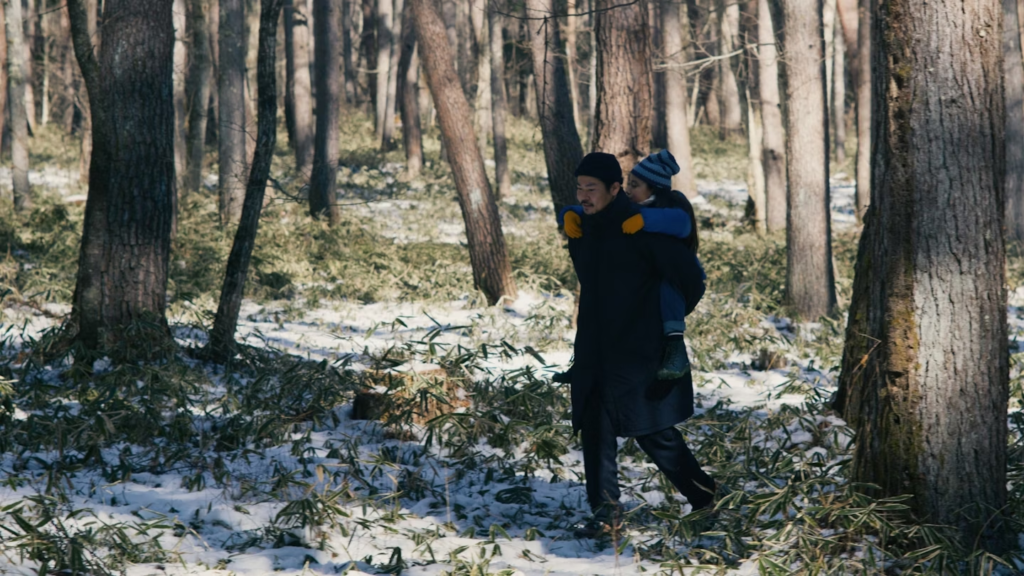
4. Evil Does Not Exist
AP: It took Ryûsuke Hamaguchi around 40 minutes before he dropped the title card in his 2021 Oscar-winning film Drive My Car. A magnificent film regardless of that type of specific heat check, the renowned Japanese director seems particularly aware of how his next film might be perceived. In that case, he sheds any notion of playfulness by opening the film with the title card at frame one: Evil Does Not Exist. And as soon as that’s out of the way, Hamaguchi offers his hand to his audience to guide them somewhat aimlessly through a forest. Lush trees slowly creep in and out of the frame as we look skyward, unsure of where we are, how we got there, where we’re going; but it’s soothing, especially when treated to the rich score of Eiko Ishibashi, which will most certainly be a talking point for audiences after the film. But over time, as the credits interject themselves into the serene images of greenery, the leaves are replaced with empty branches and decay. Now, this could be due in part to the time of year, but if there’s anything about Hamaguchi’s films that become immediately clear, it’s that every image is clearly calculated to invoke a thought or emotion in the viewer. And within mere minutes, the standard act of letting credits roll becomes a thesis statement in its own right. There’s nature, there’s the people that inhabit nature, and there’s the people who invade it.
Read: ‘Evil Does Not Exist’ Challenges Our Choices

3. Challengers
Nadine Whitney: Luca Guadagnino’s Challengers is sweaty, sizzling, and so sexy – it’s also a masterpiece of hyperbole. It’s hilarious, deliberately over the top, and forces people to get into its deliciously perverse groove. The soundtrack by Trent Reznor and Atticus Ross is employed to amp up the crowd, but also to camp up the film. Sticky short shorts, wet designer tennis shirts being discarded to reveal the male [Mike Faist, in this case] form, banana eating in one bite. Slow motion, tennis ball camera, Josh O’Connor in ruffled beast mode, psychosexual tension in spades and the final “money” shot [featuring a primal scream from Zendaya’s Tashi Duncan] bring Challengers to its orgasmic ending. Love is a blood sport and Guadagnino’s titillating tennis is game-set-match. Juicy, sticky, and horny as hell – Challengers is dynamite. It’s the love triangle film of the year and possibly one of best films about carnal and professional drive, ever.
Read: ‘Challengers’ is an Erotic Ace
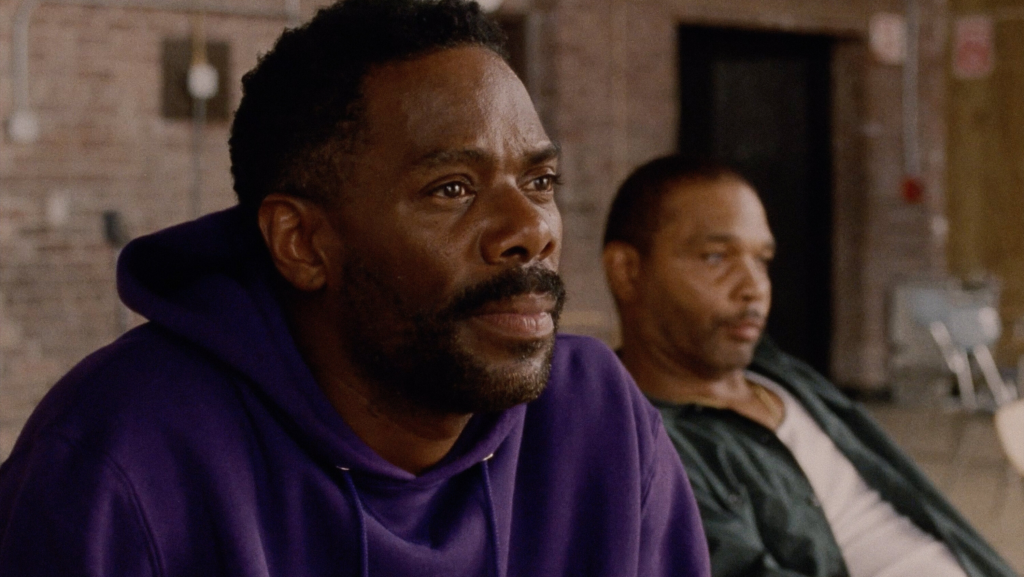
2. Sing Sing
WB: “To be, or not to be: That is the question,” reads Clarence “Divine Eye” Maclin for a group of his fellow inmates during their allotted rehearsal time at Sing Sing Correctional Facility. Though he’s performing the iconic speech from William Shakespeare’s “Hamlet,” this rendition comes at a pivotal point in “Breakin’ the Mummy’s Code,” an original production being put on by the prisoners at Sing Sing, specifically their Rehabilitation Through the Arts program. This play, written by the theater company’s director, Brent (Paul Raci), not only includes Hamlet and an assortment of mummies, but gladiators, time travel, and whatever else a man with only his imagination as solace could dream up. In “Breakin’ the Mummy’s Code,” the question isn’t “to be, or not to be” so much as it is “who or what else can we be?”
Directed by Greg Kwedar from a script by Kweder and Clint Bentley, Sing Sing is as gentle, special, and wholly alive as any film I’ve seen so far in 2024, a feat aided by career-best work from Colman Domingo as John “Divine G” Whitfield, but far more captivating thanks to a supporting cast that almost entirely features formerly incarcerated actors that participated in Sing Sing’s RTA program while in prison. Their performances lend a unique authenticity to a film that is already overflowing with it, a beautiful and humane work that highlights the creative process actors of all kinds and stations go through just as brilliantly as it depicts how vital that process can be when practiced by those in need of an escape the most. I tend to agree with our own Benjamin Miller’s review: “Sing Sing is not the type of film you expect, and certainly not one you will ever forget. Not only is it a one-of-a-kind prison movie, it’s one of the best films of the year.” I’d go so far as to say it’s nearly perfect.
Read: ‘Sing Sing’ is a Revolutionary Portrayal of Male Sensitivity
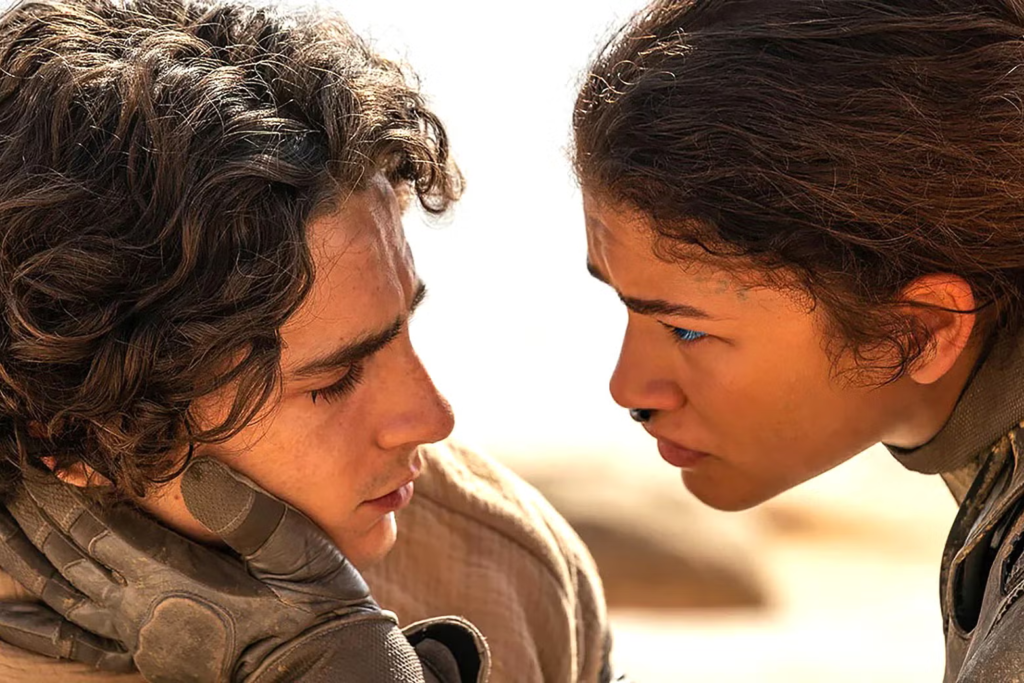
1. Dune: Part Two
WB: In terms of scale, no 2024 film can come close to Denis Villeneuve’s second cinematic installment in Frank Herbert’s Dune universe. But there’s more to a movie than how massive it can be, a call that Dune: Part Two answers in every sense. Picking up exactly where Villeneuve’s Dune left off in 2021, Part Two is a sneaky tale of fate and deception that accomplishes its goals at an astonishing level. Its very existence is astonishing, the unadaptable having been adapted as meticulously as anyone can get to the source material without veering the worm off the side of the sand dune. Not only does it take the path laid out by Part One and elevate it, but it does something few sequels have ever been capable of doing: it elevates its genre to unprecedented heights that all sci-fi films in its wake will be chasing. As M.N. Miller wrote in his review, “It’s the science-fiction epic that will blow you away and is the one we have been waiting for.” Now, all we have to do is wait for the next one. If it’s anything close to Part Two – by far the best film of 2024 thus far – said wait will have been worth its weight in spice.
Read: ‘Dune: Part Two’ is a Sophisticated Sci-Fi Masterpiece





